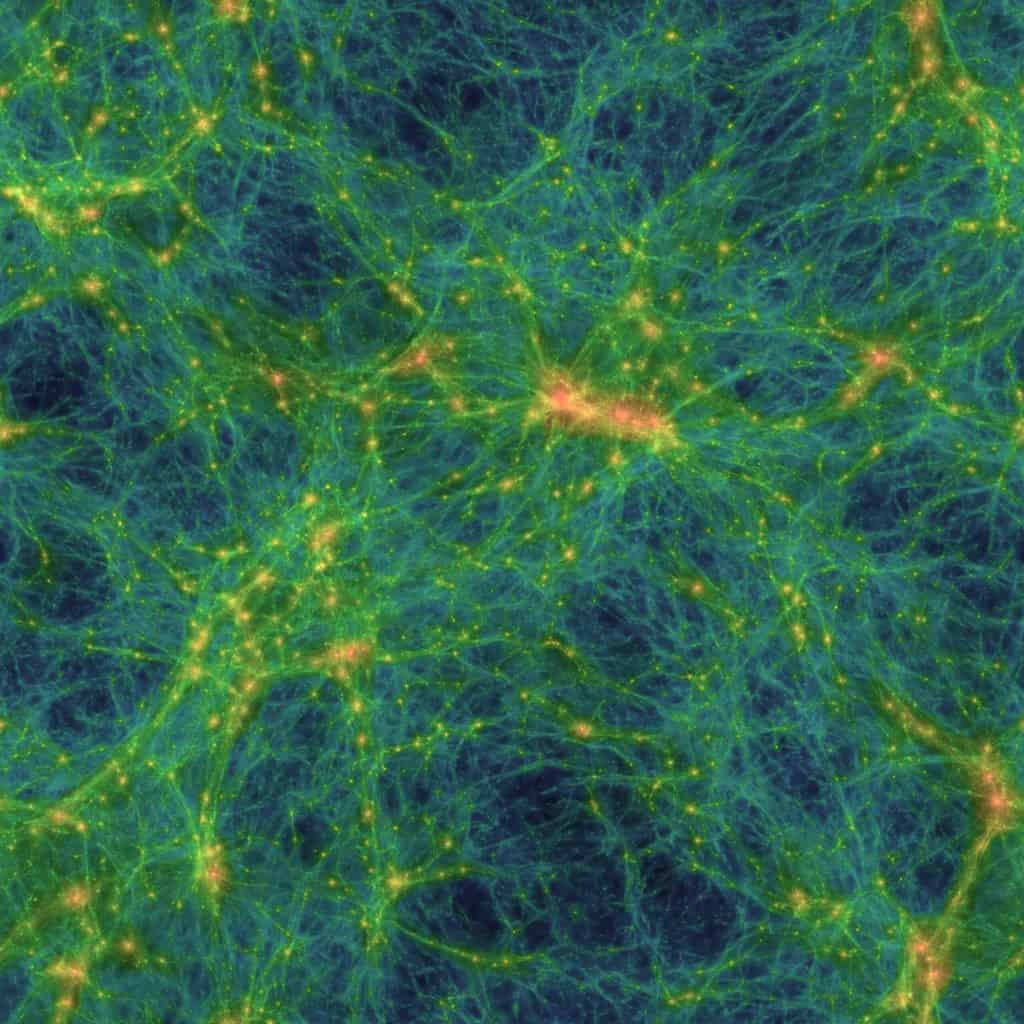
What is dark matter? This is perhaps the greatest mystery in physics today. Imagine the universe as a giant jigsaw puzzle. We can see the pieces that make up the puzzle – stars, galaxies, and other objects – but there are gaps where the pieces don’t fit together. That’s where dark matter comes in. It’s like the invisible glue that holds the universe together, filling in the gaps and providing the extra mass needed to explain the movements of the visible pieces.
Dark matter remains elusive because it doesn’t interact at all with the electromagnetic force. So because it does not absorb or reflect light, it is completely invisible. We can only infer its existence from the way it affects the visible matter around it through its gravitational effects. Like a shadow that reveals the presence of an object, dark matter leaves its mark on the universe.
But just because we can’t see dark matter doesn’t mean it’s not important. In fact, it’s thought to make up about 85% of the universe’s total mass. That’s a lot of invisible glue holding everything together. Without dark matter, the universe would be a very different place.
There are many other theories about the composition of dark matter. One popular theory is that dark matter is made up of particles called weakly interacting massive particles (WIMPs). Another theory is that dark matter could be made up of ultra-light particles called axions. These particles are even more difficult to detect than WIMPs, but they could also explain the gravitational effects observed in the universe. Now, an international team of physicists has a different candidate dark matter particle in mind: dark photons.
Dark matter, dark photons
Dark matter is “dark” because it does not interact with light in any detectable way. But just as photons are the force carrier for the electromagnetic force, so-called dark photons could be a force carrier connected to dark matter. These hypothetical particles are thought to be very similar to the regular photons that light is made of, with one important distinction: they are supposed to have mass.
First introduced in 1986 by physicist Bob Holdom, dark photons, also known as “heavy photons” or “hidden photons”, are supposed to be gauge bosons for dark matter. Dark photons and regular photons are expected to mix, such that the dark photons can convert into low-frequency photons. If that’s the case, these converted photons should heat up the cosmic web but in a much more efficient and diffuse manner across non-dense regions of intergalactic space, as opposed to other astrophysical heating mechanisms, such as star formation and galactic winds.
According to the new study, which was carried out by researchers at SISSA in Italy, Tel Aviv University, Nottingham University, and New York University, this effect is exactly what they saw happening in the data from the Cosmic Origin Spectrograph (COS) on board the Hubble Space Telescope.
“Usually, cosmic filaments have been used to probe small scale properties of dark matter, while in this case we have used for the first time the low redshift intergalactic medium data as a calorimeter, to check whether all the heating processes we are aware of are sufficient to reproduce the data. We found that this is not the case: there is something missing, that we model as a contribution produced by the dark photon,” said Matteo Viel, professor of astroparticle physics at SISSA in Trieste.
A hot cosmic web
The cosmic web is a vast network of clumps and filaments made up of dark matter and gas that stretches across the universe. It is sometimes called the “cosmic spider web” because of its delicate and intricate structure.
Imagine the universe as a giant bowl of spaghetti. The strands of spaghetti represent the cosmic web, with galaxies and other objects forming at the intersections where the strands meet. Dark matter, which we can’t see directly, forms the structure of the cosmic web and provides the gravitational glue that holds everything together.
The cosmic web is incredibly large, with filaments stretching for millions of light-years. It provides the framework for the distribution of matter in the universe, and helps to shape the way galaxies form and evolve.
The data from the COS instrument suggests that these cosmic intergalactic filaments are significantly hotter than predicted by the Standard Model. This excess heat can be accounted for by dark photons.
“Since dark photons would be able to convert into low-frequency photons and heat up the cosmic structures,” the researchers explain “they could well explain the experimental information.”
This of course doesn’t prove that dark photons make up dark matter or even if they exist, but it is an interesting hypothesis currently backed up by data that could inspire scientists to dig deeper. While the existence of dark photons is still uncertain, their potential discovery could be a major breakthrough in our understanding of the universe.
The findings appeared in the journal Physical Review Letters.









